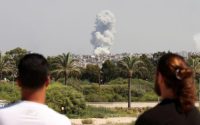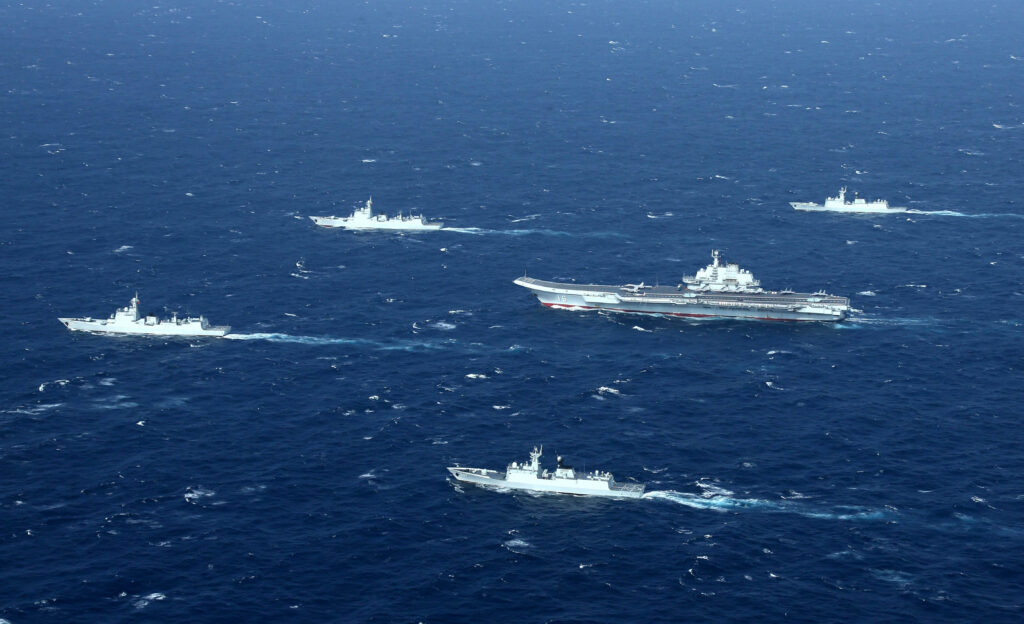
Adapting US strategy to account for China’s transformation into a peer nuclear power
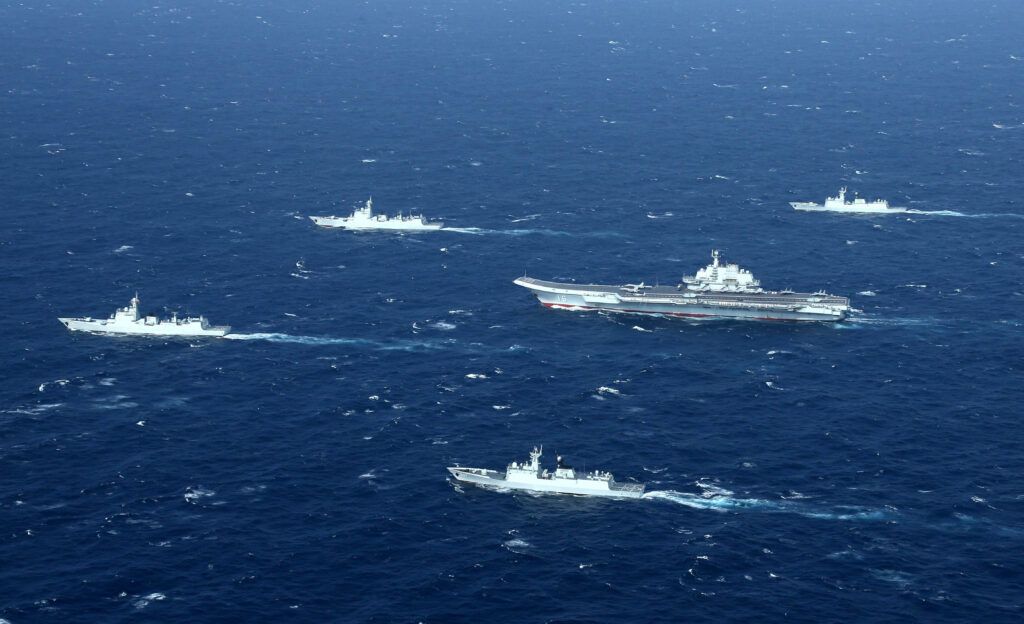
Table of contents
- Introduction
- Findings summary
- Methodology
- Analysis
- Key findings and recommendations
- Appendix: Table-top-exercise timeline
Introduction
China’s rapidly improving nuclear capabilities and expanding nuclear arsenal underpin its recent rise as a nuclear peer power. For the United States and its allies in the Indo-Pacific region, the uncertainty of China’s intentions behind this nuclear expansion poses a major challenge. It necessitates a revisit of the fundamental assumptions underpinning US and allied planning and preparation for a potential conflict with China.
The 2022 White House National Security Strategy1Joseph R. Biden Jr., National Security Strategy of the United States of America, White House, October 2022, 4–6, https://www.whitehouse.gov/wp-content/uploads/2022/10/Biden-Harris-Administrations-National-Security-Strategy-10.2022.pdf. and National Defense Strategy2Department of Defense (DOD), 2022 National Defense Strategy, 2022, https://media.defense.gov/2022/Oct/27/2003103845/-1/-1/1/2022-NATIONAL-DEFENSE-STRATEGY-NPR-MDR.PDF. identified China as the only competitor with both the intent and, increasingly, the economic, diplomatic, military, and technological wherewithal to reshape the international order. The 2022 United States Nuclear Posture Review noted how China has embarked on an ambitious expansion, modernization, and diversification of its nuclear forces and established a nascent nuclear triad.3Congressional Research Service, “2022 Nuclear Posture Review,” In Focus, December 6, 2022, https://crsreports.congress.gov/product/pdf/IF/IF12266. The report further assessed that Beijing will likely possess at least 1,000 deliverable warheads by the end of the decade.4Congressional Research Service, “2022 Nuclear Posture Review.” China also sustains extensive and ambitious space operations. According to the Department of Defense’s 2022 China Military Power Report5DOD, Military and Security Developments Involving the People’s Republic of China, 2022, https://media.defense.gov/2022/Nov/29/2003122279/-1/-1/1/2022-MILITARY-AND-SECURITY-DEVELOPMENTS-INVOLVING-THE-PEOPLES-REPUBLIC-OF-CHINA.PDF., as of 2021, China’s 260 intelligence, surveillance, and reconnaissance (ISR) satellites were the largest collection of such constellations globally other than the United States’. The transformation of China’s military capabilities no longer represents the linear, stepwise modernization of an outmoded military that characterized the People’s Liberation Army (PLA) for the past two decades.
Since the PLA launched its major internal command and service restructuring in 2015, previous doctrinal and teaching publications acquired and exploited by Western analysts are out of date and likely declining in relevance. By extension, much of the Western analysis of PLA plans, operations, and concepts of deterrence and escalation control are also likely to be out of date.
China’s rapid expansion of strategic warfighting capabilities (i.e., nuclear forces, space/counterspace systems, and cyber/information operations) represents tremendous discontinuity in the pace, scope, and scale of the PLA’s transformation, necessitating a major US reassessment of Chinese strategy, doctrine, and warfighting operations. The commonly accepted notion that deliberate Chinese nuclear force modernization is characterized as “running faster to stay in the same place” to sustain a minimal retaliatory posture is assessed to have evolved. China now has a higher likelihood of using its newfound nuclear power to more actively deter or compel6China likely does not make a distinction between deterrence and compellence. In the official strategy for the PLA Rocket Force, “all-domain deterrence (全域慑战)” is more accurately translated as “all-domain deterrence and compellence.” its opponents and safeguard its core interests. This includes perceived external threats that could negatively impact domestic political interests.
As a step in this reassessment, this project reevaluated China’s strategy, doctrine, and warfighting concepts in light of its ongoing rapid transformation into a peer nuclear power, examined implications of this assessment for future US contingencies in the Indo-Pacific region, and produced several actionable findings and recommendations for US government decision-makers that can be addressed in the next five- to ten-year horizon.
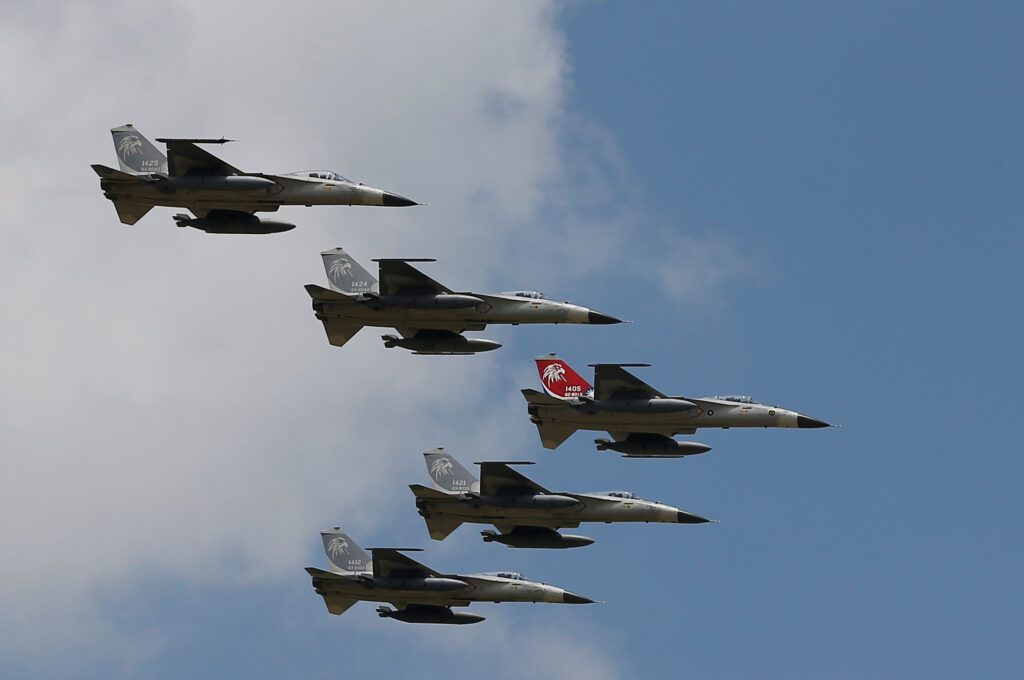
The most consequential potential future flashpoint between the United States and China is the Taiwan Strait. The People’s Republic of China (PRC) considers Taiwan to be part of its territory. Chinese President Xi Jinping, China’s most powerful ruler since Mao Zedong, has refused to rule out the use of force in “unifying” Taiwan with the mainland.7“Xi: China Will Not Rule Out Force in Taiwan,” Deutsche Welle, October 16, 2022, https://www.dw.com/en/xi-china-will-never-rule-out-use-of-force-in-taiwan/a-63454226. The PLA has spent most of its history building up its force around the objective of taking Taiwan by military means. As recently as October 2022, Secretary of State Antony Blinken publicly warned that China “wants to speed up its seizure of Taiwan.”8“China Wants to ‘Speed Up’ Its Seizure of Taiwan, Blinken Says,” Bloomberg, October 27, 2022, https://www.bloomberg.com/news/articles/2022-10-26/blinken-says-china-wants-to-speed-up-its-seizure-of-taiwan?embedded-checkout=true. Given this assessment, the research team determined that a hypothetical Taiwan invasion provided fertile ground to examine China’s near-term use of its nuclear peer status and developed a scenario set in 2032 to explore this possibility.
This project focused predominantly on exploring China’s nuclear intent and use of more traditional nuclear signaling mechanisms, with limited inclusion of emerging domains such as space and cyber. However, future work reconsidering Chinese warfighting in scenarios involving the United States must expand in scope to include not only nuclear deterrence and escalation, but also the high potential for China’s “all-domain” deterrence and compellence actions in the space/counterspace and cyber domains.
Findings summary
The findings of the project can largely be divided into two categories: the exploration of China’s intent and behavior in light of its expanding capabilities, and the implications of such behavior for the United States and its allies in a scenario where China invades Taiwan. This project finds that a Taiwan crisis could pose a near-existential threat to Xi’s regime under specific circumstances, potentially provoking a nuclear first-use response. Additionally, the United States’ and allies’ potential misunderstandings of China’s interests and misinterpretation of PRC signaling could have catastrophic consequences.
Insights based on applying an understanding of China’s shifting nuclear intent and capabilities to a Taiwan invasion scenario yielded a few important observations:
- Currently flawed US institutional assumptions regarding China’s strategic decision-making calculus must be checked, particularly on Beijing’s likely approach to a perceived zero-sum, near-existential threat to Xi’s reign. A failed PRC invasion of Taiwan, without a credible off-ramp for China to claim victory, could threaten Xi’s reign, even if the Chinese Communist Party (CCP) and its rule over China persist under difficult conditions. The need to prevent such failure would likely justify the use of any and all measures, including nuclear employment, once the invasion is underway. Therefore, under a hypothetical 2032 Taiwan invasion scenario, it is plausible that Xi and the CCP leadership9China ‘s nuclear decision-making is extremely siloed. In preparation for a major conflict, China could assemble a Supreme Headquarters (Supreme HQ) to coordinate the war effort. The Supreme HQ would likely consist of the Central Military Commission (CMC), the Politburo, the Politburo Standing Committee (PBSC), as well as key economic figures. This body would coordinate all major issues concerning the war, including non-military aspects such as economic and personnel mobilization. might plan for the potential of nuclear employment, both to deter continued US and allied intervention and to reverse a conventional overmatch for the PLA if necessary.
- Structural issues within the US government decision-making process contribute to an adverse escalation dynamic and resource tensions between conventional and nuclear warfighting. The siloed nature of the US government and its approach to courses of action (COA) formulation hinders the integration of specialized expertise across lower organizational levels. This fragmentation leads to disjointed and often flawed recommendations which senior decision-makers struggle to thoroughly evaluate and synthesize before implementation activities due to time constraints. The misreading of China’s core interests contained in these disjointed COAs leads to tension between the United States’ winning a conventional war and maintaining nuclear deterrence, and also creating uncertain trade-offs in scarce military resources.
- There is an increased likelihood of a limited nuclear exchange in a future Indo-Pacific crisis scenario. Allied pressure could significantly shape US decision-making on nuclear retaliation. Due to Japan’s and the Republic of Korea’s weakened conventional posture fighting over Taiwan, both countries may push to ramp up nuclear signaling. This could produce pressure for the United States to escalate in the nuclear realm, in contrast to US desire to manage nuclear escalation. Additional divergent interests among allies could spur unilateral attacks against China, contributing to China’s consideration of nuclear first use and further pressuring the United States into nuclear retaliation to maintain the credibility of its extended deterrence commitment to allies in the region.
- China’s relationship with Russia may shape China’s decision-making calculus on nuclear first use. Additionally, Russia may also exploit any crisis by exercising nuclear coercion to achieve its own ends.
- Third-party countries could play a role in limiting China’s escalatory actions. While these countries are unlikely to fundamentally change China’s core intention for using nuclear weapons, its risk-reward calculations and potential for escalation are still susceptible to external influences.
Methodology
The project began with two workshops to consult with experts in the US government, think tanks, and the academic community. The workshops encouraged a productive conversation on scoping and building a credible nuclear scenario that pitted China’s core interests against those of the United States and allies. Feedback from the workshop informed the subsequent mini table-top exercise (TTX), where the Red Team, representing China, developed a scenario consisting of three moves where a nuclear peer China ultimately decided to pursue an invasion of Taiwan and established a credible concept of operation (CONOP) for such an invasion.
This scenario served as the basis for a one-day TTX consisting of teams representing the United States (Blue), China (Red), US allies (Green), and the rest of the world (Gray). The Blue Team was further divided into five different cells to simulate the US decision-making process: the National Security Council (NSC), the Office of the Secretary of Defense (OSD), US Indo-Pacific Command (USINDOPACOM), US Strategic Command (USSTRATCOM), and US Northern Command (USNORTHCOM). The Control Team, staffed by the project’s principal investigators, also acted as the president of the United States (POTUS) to adjudicate all of the Blue Team’s proposed actions. The full TTX allowed the project to capture each team’s decision-making process and underlying logic, and contributed to the understanding of potential future dynamics.
Teams were given read-ahead materials and an order of battle circa 2032. The TTX consisted of three moves, each introduced by a situation update. The Control Team periodically introduced previously unannounced injections to simulate real-time events. The TTX began in the middle of China’s 2032 invasion of Taiwan, with the United States and its allies already engaged in a conventional conflict with China. This choice was partially motivated by the desire to move beyond the prevailing discussion on how to prevent deterrence failures before a Taiwan crisis turns kinetic.
In Move 1 of the scenario, China responded to the initial US intervention by launching two conventional intercontinental ballistic missiles (ICBMs) as warning shots against US installations supporting the war effort in the Indo-Pacific region with the understanding that the United States would intercept and neutralize these launches. The United States responded with a conventional escalation by sending additional forces to the Indo-Pacific region and exploring additional avenues such as directly striking PLA lodgments in Taiwan and escalating from the initial aerial and maritime engagements to secure Taiwan. The US defense establishment further requested POTUS authorization to conduct strikes against the Chinese mainland. In Move 2, China, in an attempt to warn the United States from continued intervention, demonstrated its willingness to escalate into the nuclear realm by conducting single conventional strikes against US nuclear and missile defense infrastructure; the United States responded by aggressively targeting, but not eliminating, China’s nuclear infrastructure, taking out certain military targets in China perceived to be of a proportional nature while continuing to reinforce US and allied forces in and around Taiwan. After an incident where China hit a major Japanese shrine in Tokyo and claimed it was accidental, both Japan and the ROK requested increased nuclear assurances from the United States. In Move 3, with the war in Taiwan going poorly for China, the PRC launched two five-megaton nuclear warheads against Guam, destroying US military operating bases there and killing the entire civilian population of the island.
The TTX suggested how China and the United States might respond under a worst-case scenario, exposing China’s own misunderstanding of the United States’ support for Taiwan and, on the US side, significant knowledge gaps and internal bottlenecks that undermined effective responses to PRC actions. Post-TTX after-action reviews with participants and further analyses informed this report’s recommendations.
Analysis
The project’s findings generated several significant analytical conclusions.
China’s strategic intent and behavior concerning nuclear employment remain unclear.
Significant gaps still exist between China’s declared doctrine, how the United States and allied intelligence and academia understand it, and how China will execute its doctrine in future contingencies as it moves toward a nuclear peer status.
Current US nuclear theory and policy are informed by historical memory from the Cold War and interactions with the Soviet Union as well as present-day Russia. While Russia’s signaling has been aggressive, escalatory, and clearly communicated, China’s signaling methods tend to be more subtle and ambiguous. The majority of US China policy community assess that China has intentionally created these ambiguous redlines, partially to exploit what they perceived as the risk-averse nature of the US and allied decision-making process. China’s lack of nuclear transparency may also be attributable to its historically inferior nuclear force. However, China may yet be persuaded to become more transparent about its nuclear capabilities and intentions. As China continues to build toward relative ICBM-capable peer status with the United States, the pressure for US leaders to respond to China’s nuclear posture during a crisis increases. This heightens the risk of either the United States or China triggering an unintentional nuclear spiral. Therefore, for China to safely wield its newfound nuclear peer status to achieve national goals, it must increase transparency of its nuclear intentions and capability both before and during a crisis. More clarity is needed to close this gap between China’s stated nuclear doctrine and its actual motivations, behavior, and intent, as it expands its nuclear capabilities toward achieving peer status with other major nuclear powers.
US civilian and military leadership contemplating China’s near-term strategic calculus oftentimes fail to recognize that as China rapidly expands its nuclear arsenal and delivery capabilities, it will behave in a way consistent with the status of a nuclear peer power and that proportional responses toward China’s escalation may be insufficient to deter China’s aggression under these circumstances. During a crisis, this failure to recognize China’s potential behavioral change due to its nuclear peer status could translate into a false US assumption that China would not contemplate nuclear first use in a conflict with the United States and its allies. This false assumption would have the potential, through increasingly large-scale conventional engagements, to lock the United States and China into an inadvertent escalation spiral, which could eventually, according to China’s decision-making calculus, leave the PRC little choice but to conduct nuclear first use.
This failure to recognize China’s changing nuclear behavior is especially dangerous when combined with a misreading of how China perceives its core interests. Analysis of the Taiwan invasion scenario offers a compelling example; for China, once the invasion is underway, failing to achieve a victory over Taiwan, symbolic or otherwise, constitutes a near-existential threat to China’s leadership. Even if the CCP could survive the political implications of such a failure, Xi and the current generation of CCP leadership would not. Under such direct threats, China may jettison its declared “no first use” (NFU)10China, however, may not consider NFU to apply for use of nuclear weapons on its own soil. During the Cold War, China routinely planned to use nuclear weapons against invading Soviet troops on Chinese soil. Whether China considers Taiwan as part of its territory for the use of nuclear weapons remains to be investigated. policy. Additionally, due to this misperception of China’s core interests, the United States is likely to misread China’s signaling measures, especially nuclear ones, during a crisis. To combat this challenge, the United States and its allies must develop an integrated deterrence posture and escalation logic that take into account China’s unique appreciation of political security and consideration of existential threats.
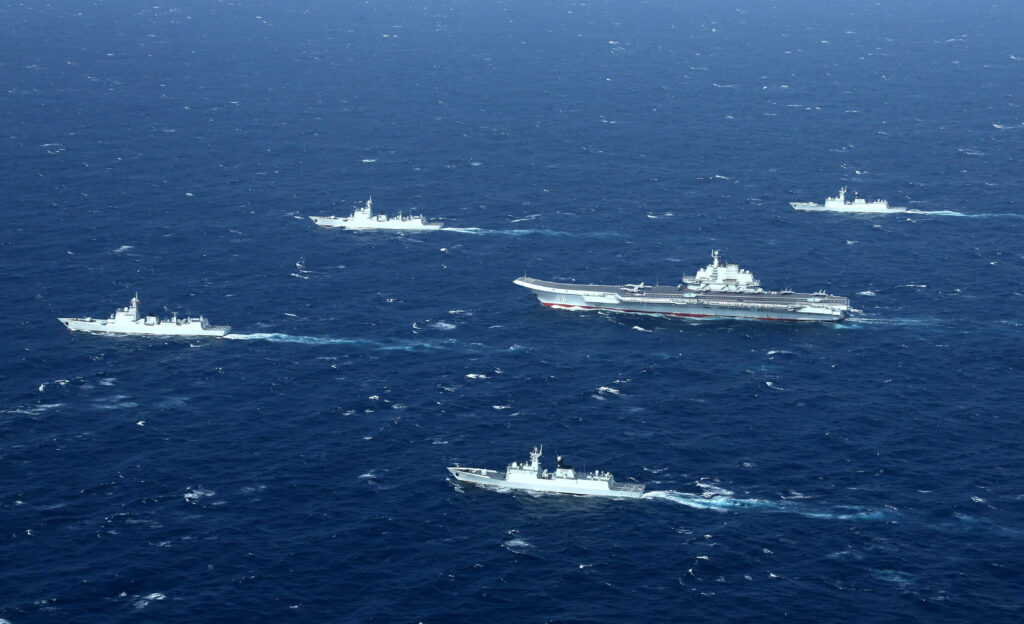
Additionally, crisis communication with China remains an issue. China often does not use established crisis communication channels with other governments at the first sign of a crisis to signal its displeasure, negating the function of such channels, partially because the PLA is not authorized by the CCP to communicate. This lack of crisis communication has the potential to prevent the United States and its allies from discussing potential face-saving political resolutions with China that could prevent an escalation spiral. Thus, any integrated deterrence posture against China will only be effective and remain robust after establishing communication channels with Beijing that would survive an escalation process.
China’s expanding nuclear arsenal checks US courses of action.
The erosion of nuclear literacy in broader US decision-making circles has created a deep-seated belief in certain parts of the US government that US nuclear arsenal is necessary but irrelevant to most forms of warfare other than nuclear deterrence. Until recently, China has maintained a minimum nuclear deterrence posture, which is effective in deterring a US nuclear first strike in peacetime and in a conventional war before the nuclear ceiling is breached. The United States has traditionally believed, following the outbreak of war and initial nuclear signaling, that it can neutralize China’s entire nuclear arsenal with minimal casualties if it is willing to accept a marginally greater risk of suffering nuclear strikes. This is no longer the case with China’s expanded nuclear force. US Combatant Commands, such as USINDOPACOM, have not updated their operational planning to account for China’s growing nuclear arsenal. Under current circumstances, US COAs could be checked by China’s newfound peer nuclear status when a conflict arises, as China could now wield its expanded nuclear arsenal beyond the strict minimum deterrence posture. Future developments of integrated deterrence, war planning, and crisis management must account for this expanded nuclear dimension.
A siloed US government combined with a lack of general literacy on nuclear and China issues make inadvertent escalation more likely.
The siloed nature of the US government introduces two elements that contribute to an adverse nuclear escalation dynamic with China. First, the division of conventional warfighting and nuclear deterrence among the lower echelons of the US defense establishment means that COA formulation is divided along such lines. The resulting lack of nuclear literacy among the conventional components means that proposed conventional COAs could have nuclear implications that would potentially be overlooked. Second, such division is also partially responsible for a lack of literacy on China’s strategic intent and behavior in these siloed institutions. US nuclear experts, lacking the necessary appreciation for China’s strategic intent and perception of stakes involved in a near-existential crisis that could threaten Xi’s regime, are likely to rely on the Cold War era assumption that a hard ceiling and firebreak for nuclear use must exist for China, further exacerbating US misperceptions regarding China’s nuclear use. This misperception also contributes to an inability to formulate an appropriate and proportional response to China’s nuclear use.
This lack of China literacy within siloed US working-level institutions also introduces some unique risks in a conventional war with China. For example, China has long suspected that the United States and its allies’ ultimate goal is regime change in China, and warfighting over an invasion of Taiwan provides fertile ground for such suspicions to manifest. Strikes on China’s mainland, especially on PLA military installations and infrastructure that serve the dual purpose of both supporting an invasion force and protecting China’s leadership, run the risk of reinforcing China’s suspicion that the United States and allied warfighting over Taiwan is really an attempt to topple the CCP, thereby provoking a potential nuclear response. This lack of China literacy further extends to US nuclear experts, who lack the necessary appreciation of China’s strategic intent and stakes to help formulate an appropriate and proportional response to China’s nuclear use in a crisis scenario.
Finally, the US government’s siloed approach could also interfere with US decision-makers’ understanding and ability to counter the full range of PLA deterrence and compellence behavior in the nuclear, cyber, space, and other domains which China views as interlinked components of its all-domain deterrence and compellence strategy.11China’s deterrence posture as stated during the standing up of the People’s Liberation Army Rocket Force is to possess “nuclear and conventional capabilities for all-domain deterrence and compellence (核常兼备,全域慑战).” “核常兼备全域慑战 现代火箭军怎么建?,” People’s Daily, March 10, 2017, http://military.people.com.cn/n1/2016/0310/c1011-28187987.html. In short, China’s intentions and signals can be easy to misinterpret due to the siloed and piecemeal understanding of separate US specialist domains of emerging fields, such as cyber, space, and artificial intelligence (AI).
Misreading China’s intent creates tension between the theory of victory in Taiwan and nuclear deterrence against China.
The US government’s misunderstanding of China’s nuclear intent12China has yet to exhibit a willingness to employ nuclear weapons over territorial expansion. Taiwan is perceived as a reclamation of lost territory. Historically, China has only employed nuclear weapon tests to demonstrate China’s resolve and intimidate opponents into accepting a status quo favoring China. leads to a false dilemma between choosing to pursue a conventional victory to secure Taiwan and managing nuclear escalation with China. This fundamental misunderstanding of when and how China is willing to employ nuclear weapons can create a false impression that China will either win a conventional invasion of Taiwan or employ nuclear weapons in a bid to prevent a failed invasion and its associated political cost to China’s leadership. Though a pre-war China would benefit from presenting the United States and allies with the appearance of such a dilemma, hoping that the United States and allies would reach the conclusion that abandoning Taiwan to its own fate is the only logical conclusion to avoid nuclear escalation, the reality is different. A more nuanced understanding of China’s decision-making calculus, taking into account that war goals often change during a crisis, reveals that once an invasion is underway and stalled, the CCP is likely to be receptive to political and face-saving measures to end the invasion in order to ensure its political survival, especially since China’s alternative—employing nuclear weapons in a bid to prevent defeat—harbors far more uncertainty and negative consequences. Such a political resolution would also allow Taiwan to maintain its autonomy while staving off nuclear escalation between the United States and China. However, US decision-makers’ tendency to favor the immediate formulation of COAs following a crisis tends to preclude the necessary time and consideration to carefully examine China’s shifting war goals as the crisis develops and to take appropriate measures to exploit it.
Lack of contingency planning creates uncertain trade-offs between resources needed for conventional warfighting and those for an escalating nuclear posture.
In a future Taiwan crisis, the United States is likely to face a choice between dedicating scarce and finite resources to either conventional fighting, thereby ensuring victory over Taiwan, or to nuclear deterrence, thereby ensuring the continued safety of US and allied homelands and preventing further nuclear escalation. Certain dual-use assets, such as bombers and fighters capable of conducting nuclear strikes, air-refueling tankers necessary to support them, and anti-submarine warfare (ASW) patrol aircraft necessary to guard against China’s ballistic missile submarines (SSBNs), would be in short supply as the fighting escalates. A lack of contingency planning to balance these trade-offs in advance creates preventable tensions during wartime, when decision-makers’ energy and attention should be focused on more valuable subjects such as alliance management and public communication.

Allied dynamics could increase the likelihood of nuclear exchange under a traditionally conventional scenario.
The asymmetry of interest between the United States and its major treaty allies in the region, Japan and the ROK, increases the likelihood of nuclear escalation in a conflict with China. While the original promise of extended deterrence is to shield Japan and the ROK from nuclear threats, both countries would expect US extended deterrence to also cover, at least to a limited degree, the conventional security of each during a crisis with China over Taiwan.
In a conventional conflict with both Japan and the ROK engaged, any degradation of their conventional military posture due to warfighting alongside the United States weakens their deterrence against adversaries other than China and would necessitate additional reassurances from the United States. Allied losses would also create differing demands for nuclear assurances based on each allied country’s diverging interests. For example, a weakened ROK conventional posture stemming from military losses would potentially generate demand from the ROK for increased US nuclear commitment to ward off any Democratic People’s Republic of Korea (DPRK) adventurism. Such escalation would create additional risks for misinterpretation and inadvertent escalation between the United States and China.
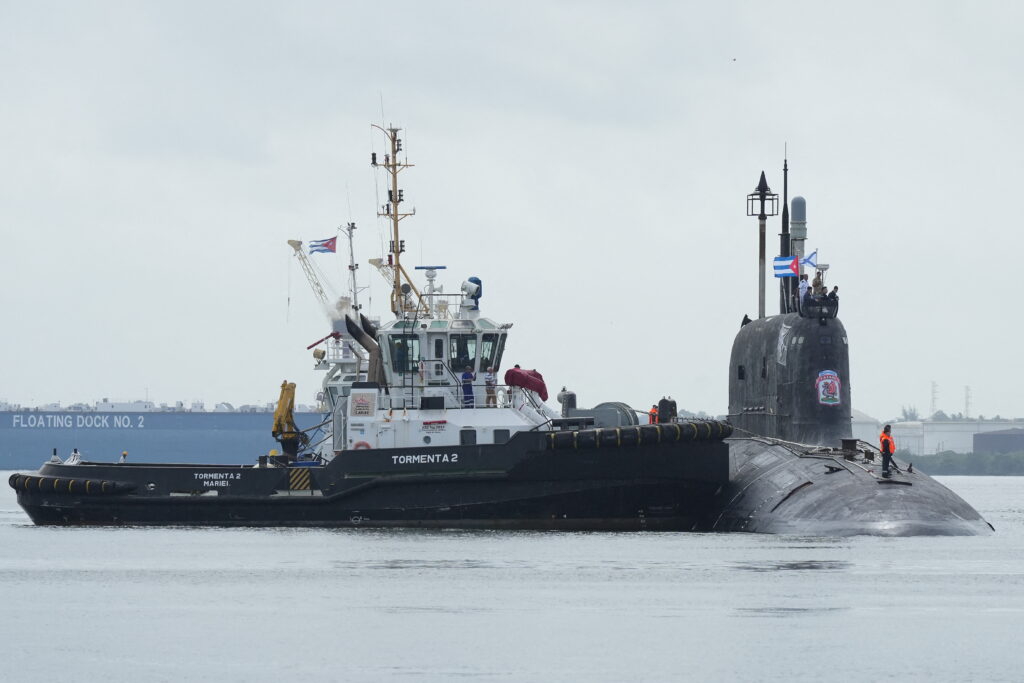
Russia may shape China’s nuclear intent in a US-China nuclear scenario.
China has likely learned from Russia’s invasion of Ukraine in February 2022 that the prospect of major power military conflict, and even nuclear use, has become a key characteristic of the global order for the first time since the end of the Cold War, contributing to China’s own reassessment on its future use of nuclear weapons. While there is currently no sign of nuclear coordination between Russia and China, the “no limits” partnership and deepening security ties between the two countries suggest potential implications for nuclear scenarios. In a potential US-China nuclear crisis, Russia may offer tacit support by elevating its own nuclear alert status, thereby diverting North Atlantic Treaty Organization (NATO) and US attention from China’s escalatory actions. Additionally, Russia is likely to take advantage of a US-China nuclear crisis and employ nuclear coercion to serve its own territorial ambitions.
The Russia-Ukraine conflict has likely reinforced the PRC’s judgment that key factors keeping US-China great power competition in check are breaking down. These include nuclear deterrence, deep economic integration, and shared stewardship of global financial stability and cooperation on global challenges such as pandemics and climate change. Furthermore, Russia’s apparent successful use of nuclear blackmail against NATO allies also provided a dangerous precedent.
As the world’s other nuclear peer power with a deepening partnership with China, Russia’s intentions and behavior in conventional and nuclear realms during a potential US-China conflict remain unexplored territory that could potentially have a significant impact on any Taiwan scenario, particularly as the conflict grows in scale and length. This unexplored dynamic between Russia and China has the potential to put severe strains on existing US and allied warfighting preparations and deterrence postures, both in the Indo-Pacific and the transatlantic regions. These developments require a reassessment of Russia’s role in China’s conflict over a core interest such as Taiwan. The interconnected nature of the US-China and US-Russia rivalries necessitates a comprehensive strategy that accounts for the potential convergence of these threats and the escalatory dynamics they could unleash.
Third-party countries’ perception may check China’s nuclear escalation.
In addition to Russia’s role in a US-China nuclear scenario, key Global South countries’ perceptions and responses may influence China’s intent and behavior as it becomes a nuclear peer of the United States. Specifically, countries within sub-Saharan Africa may alter otherwise positive perceptions of China if Beijing is perceived to have violated its NFU policy, hampering China’s ambitions and influence in the region. China would likely be willing to risk international pariah status through nuclear first use in the event of an existential crisis, and many developing countries reliant on China economically are unlikely to completely isolate China regardless of its actions. Nevertheless, this could still provide additional checks against China’s decision for nuclear escalation. Additionally, the project identified Global South countries’ relatively shallow understanding of China’s intent and potential adverse reaction to China’s nuclear first use, and the impact on China’s strategic goals in the developing world, as areas for future research.
US integrated deterrence remains aspirational, complicating coherent US management of a crisis with China.
The increased likelihood of a nuclear exchange stemming from a conventional conflict in the near future is exacerbated by the lack of a true integrated deterrence posture, both for the United States and its allies, that comprehensively integrates institutional understanding of all emerging domains, including cyber, AI, and space. Currently, knowledge of the roles these domains play in the overall US deterrence posture remains within specialist domains and is not integrated with the existing nuclear deterrence posture. Within the US government, individual COAs proposed by lower levels are often only evaluated for coherence at the highest possible level, leaving the burden of integration and the need for an enormous amount of cross-domain expertise at the highest level of decision-making, where time and energy is the most precious, especially during a crisis. Additional integration in expertise and understanding at lower echelons of decision-making is needed to ensure more integration of initial COA development.
Key findings and recommendations
Finding: Currently flawed US institutional assumptions regarding China’s strategic decision-making calculus must be checked, particularly in the context of Beijing’s likely approach to a perceived zero-sum, near-existential threat to Xi’s reign. A failed Chinese invasion of Taiwan, without a credible off-ramp for China to claim victory, could threaten Xi’s reign. Even if the CCP and its rule over China persist under difficult conditions, the need to prevent such failure likely would justify the use of any and all measures, including nuclear employment, once the invasion is underway.
- Recommendation: The National Security Council (NSC), the Department of State (DOS), and the Department of Defense (DOD), along with US allies, should establish an effective communication channel with China that will not fail at the first sign of trouble during a crisis. The establishment of an effective communication channel is going to require a deeper, sustained strategic stability dialogue that can weather the ups and downs of the US relationship with China. This has to start at the top, specifically from the White House and CCP leadership, as the People’s Liberation Army is not empowered to do this. The DOS should also lead the effort in devising proposals for diplomatic and political off-ramps for China under different contingencies. A Chinese invasion of Taiwan need not be a zero-sum act, and a political settlement can and should be explored even after the outbreak of war. While perceived willingness from the United States to negotiate a political settlement over Taiwan may undermine US and allied deterrence posture before the war, as escalation commences, China may be open to a “face-saving” resolution that would stave off a nuclear exchange.
- Recommendation: The United States and its allies should collectively, as well as independently, convey to China that its nuclear expansion and lack of transparency is a shared concern and that China needs to clearly explain the contradiction between its rapidly expanding nuclear capabilities and its stated nuclear posture and policy. This can be pursued by making the item a top priority in bilateral engagement with China and requesting that US allies with regular engagements with China do the same. Additionally, this could be folded into future trilateral US-China-Russia strategic stability talks or assurance talks involving multiple aspects of deterrence, from nuclear to space to cyber to AI.
- Recommendation: The US intelligence community (IC) should conduct additional studies to close the gap between China’s declared doctrine, how US and allied intelligence agencies and academia understand it, and how China will execute it in any future contingencies.
- Recommendation: The US IC should conduct additional studies on China’s perceptions of the stakes at play for core Chinese interests under various scenarios and how these perceptions are linked to China’s intent and behavior across the entire deterrence spectrum. Such understanding is crucial to developing appropriate US responses.
Finding: Structural issues within the US government’s decision-making process contribute to an adverse escalation dynamic and resource tensions between conventional and nuclear warfighting. The siloed nature of the US government and its approach to courses of action (COA) formulations hinder the integration of specialized expertise across lower organizational levels. This fragmentation leads to flawed recommendations, and senior decision-makers lack sufficient time and resources to thoroughly evaluate and integrate them before implementation. The resulting misreading of China’s core interests contributes to the false tension between US conventional warfighting and nuclear deterrence priorities. The misinterpretation of China’s core interests exacerbates the tension between the United States’ conventional warfare capabilities and nuclear deterrence priorities, intensifying competition for scarce military resources.
- Recommendation: The US government, particularly the DOD, should establish domain-specific cells, such as for cyber and space, to create a more integrated deterrence posture among those in the lower echelons of the US decision-making process. These cells should be established at levels that traditionally do not house such cross-domain expertise. This will allow the formulation of COAs at lower levels to take advantage of this understanding and mitigate preconceived biases. Additionally, nonmilitary expertise should also be integrated in lower-echelon COA formulation to mitigate the false dichotomy of a perceived lose-lose situation, where China would either succeed in an invasion of Taiwan or employ nuclear measures to prevent an unacceptable loss.
- Recommendation: The DOD and the NSC should develop, under direction from the national command authority, a coherent, pre-planned integrated deterrence posture that includes contingencies to address the defense of the continental United States as a priority and the potential need for trade-offs in resource allocation.
- Recommendation: The US government should develop guidelines and contingencies for maintaining an integrated deterrence posture during conventional warfighting that can balance resource allocation between conventional, nuclear, and other domains in an escalating crisis.
Finding: Allied dynamics could increase the likelihood of limited nuclear exchange in a future Indo-Pacific crisis scenario.
- Recommendation: All levels of the US government should develop contingencies for a flexible integrated deterrence posture. These contingencies should be developed closely with allies, considering each ally’s primary and secondary adversaries while adjusting the existing posture, thereby promoting unity of action between the United States and its allies and avoiding disjointed operations that could send dangerous escalatory signals to China. Such a flexible deterrence posture should work in concert with an effective communication channel to China, as detailed in this section’s first recommendation.
- Recommendation: The White House should prioritize discussions with Japan and the Republic of Korea (ROK) on flexible contingencies for joint integrated deterrence against China. Emerging Japan-ROK-US trilateral security cooperation provides an ideal platform to coordinate regional security issues. The United States should prioritize discussion on how trilateral cooperation could present a coordinated yet flexible integrated deterrence posture toward China and develop contingencies based on allies’ diverging interests, especially regarding nuclear extended deterrence, to provide a stable foundation for closer integration.
Finding: China’s relationship with Russia may shape China’s decision-making calculus on nuclear first use. Additionally, Russia may also exploit any crisis and exercise nuclear coercion to achieve its own ends.
- Recommendation: The US IC should conduct additional research and studies into a potential simultaneity scenario involving Russia-China nuclear use. The DOD should also work with the IC to explore potential mitigation measures against these adversaries and their potential partners.
Finding: Third-party countries could play a role in limiting China’s escalatory actions. While these countries are unlikely to fundamentally change China’s core intention for using nuclear weapons, its risk-reward calculations and potential for escalation are still susceptible to external influences.
- Recommendation: The DOS, in conjunction with the DOD, should aim to influence China’s intent on nuclear first use through third-party pressure. To this end, the two departments should conduct additional research and outreach to third-party countries with significant economic ties to China, such as those in the Association of Southeast Asian Nations and the Organization of American States, to understand their views and possible responses to a Chinese nuclear first-use scenario.
- Recommendation: The White House and the Joint Staff should urge allies and relevant third-party countries to be more vocal in persuading China to be more transparent on its nuclear expansion. The White House and the Joint Staff should encourage a range of stakeholders, from Global South governments to intergovernmental organizations, such as BRICS, the Caribbean Community, and the African Union, to carefully examine their own interests under a Chinese nuclear-first-use scenario and to demand greater transparency from China on how its nuclear expansion impacts its declared nuclear use policy.
Appendix: Table-top-exercise timeline
About the authors
Acknowledgements
A version of this report was originally written for the US Defense Threat Reduction Agency (DTRA), but this does not necessarily express the views of DTRA or any other US government organization. The principal investigators, David Shullman and John Culver, extend their gratitude to DTRA for their sponsorship, guidance, and support throughout this study, with special thanks to the members of the Strategic Trends team. The principal investigators also appreciate the contributions of all the experts and stakeholders, both within and outside of government, who took part in the project’s activities and provided valuable perspectives that informed the report.
The principal investigators would also like to thank the Global China Hub team for their contributions and support to this project: Shelly Hahn, Colleen Cottle, Kitsch Liao, Matthew Geraci, Caroline Costello, and Samantha Wong. Thank you to Frederick Kempe, the Atlantic Council’s president and CEO, as well as to Gretchen Ehle, the Atlantic Council’s CFO, Nicholas O’Connell, and Caroline Simpson, without whom this study would not have been possible
The Defense Threat Reduction Agency (DTRA), as part of the Strategic Trends Research Initiative, sponsors strategic research projects under Broad Agency Announcement HDTRA1-22-S-0004. DTRA sponsored the Atlantic Council to conduct this research examining China’s transformation into a peer nuclear power. This report reassesses China’s changing strategy, doctrine, and warfighting approach as a peer nuclear power, and China’s employment of this nuclear power in the context of US-led military and economic actions against China in a Taiwan invasion scenario. The views expressed herein are those of the authors and do not necessarily reflect the official policy or position of the DTRA, the US Department of Defense, or the US Government.
Explore the program

The Global China Hub researches and devises allied solutions to the global challenges posed by China’s rise, leveraging and amplifying the Atlantic Council’s work on China across its sixteen programs and centers.
Image: An illustration of the flag of the People’s Republic of China. Andy.LIU via Shutterstock




